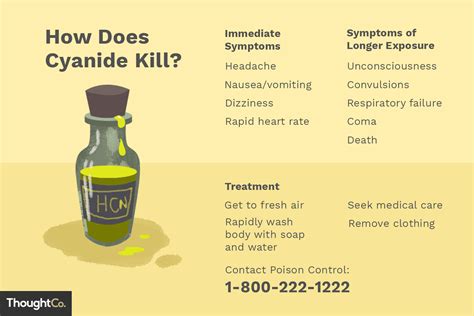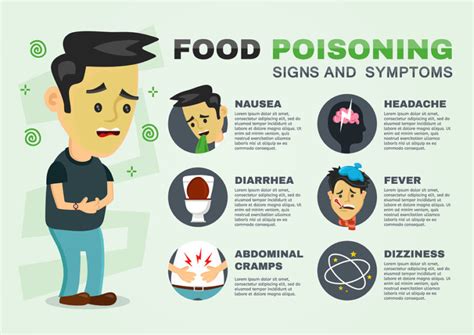
Fiberglass Poisoning Symptoms
Fiberglass Poisoning Symptoms
Fiberglass is made of small fibers of glass that are woven together to create a material used in insulation, home appliances, and textiles. It is considered safe for use in most applications, but it can cause health problems if ingested or inhaled. Fiberglass poisoning symptoms can range from mild to severe depending on the amount and duration of exposure.
One of the first symptoms of fiberglass poisoning is irritation to the skin, eyes, and respiratory system. This may include redness, itching, and burning sensations in the eyes, nose, and throat. In some cases, these symptoms can progress to coughing, wheezing, and shortness of breath. Prolonged exposure can also lead to chronic lung problems.
Other common symptoms of fiberglass poisoning include headaches, fatigue, and nausea. These symptoms may be accompanied by dizziness or lightheadedness, particularly if exposure occurs in an enclosed space with poor ventilation. Some people may also experience chest tightness or pain, which can indicate respiratory distress.
Symptoms of fiberglass poisoning can vary widely depending on the individual and the circumstances of exposure. Children and individuals with respiratory conditions such as asthma may be more sensitive to fiberglass and may experience more severe symptoms. Additionally, prolonged or repeated exposure can increase the risk of developing long-term health problems.

If you suspect that you have been exposed to fiberglass, it is important to seek medical attention right away. Your doctor can evaluate your symptoms and provide treatment to alleviate discomfort and prevent complications. Depending on the severity of your symptoms, treatment may include medications to reduce inflammation and ease breathing, or more advanced interventions such as oxygen therapy or hospitalization.
In conclusion, fiberglass poisoning symptoms can range from mild irritation to serious respiratory problems. If you believe you have been exposed to fiberglass, be sure to seek prompt medical attention to avoid further complications and ensure proper treatment.
Skin Symptoms Associated with Fiberglass Poisoning
Fiberglass is a widely used material in various industries such as construction, automotive, and manufacturing due to its insulating properties. However, prolonged exposure to fine fiberglass particles or inhalation of fiberglass dust can lead to skin symptoms associated with fiberglass poisoning.
One of the most common skin symptoms of fiberglass poisoning is itching and irritation. The tiny particles can penetrate the skin, causing redness, inflammation, and a prickly sensation. This can lead to discomfort and even pain, especially if left untreated.
Another skin symptom associated with fiberglass poisoning is the development of rashes. These rashes may appear as small bumps or patches on the skin and are often itchy. In severe cases, they may become blistered and ooze fluids, leading to the risk of infection.
In addition, fiberglass poisoning may cause skin sensitivity and allergic reactions. People who are exposed to fiberglass for long periods may develop contact dermatitis, an allergic reaction that causes a rash, blisters, and itching. Those with sensitive skin may also experience hives or swelling in the affected area.
It is important to note that skin symptoms associated with fiberglass poisoning may not appear immediately after exposure. In some cases, symptoms may take days or even weeks to develop. Therefore, it is crucial to take necessary precautions when working with fiberglass and seek medical attention if any symptoms arise.
To prevent skin symptoms associated with fiberglass poisoning, it is essential to wear protective clothing such as gloves, long sleeves, and pants. Workers should also use respirators and goggles to avoid inhaling fiberglass dust. Regular cleaning of the work area and proper disposal of fiberglass waste can also help reduce the risk of exposure.
In conclusion, skin symptoms associated with fiberglass poisoning can range from minor irritation to severe allergic reactions. It is important to take necessary precautions when working with fiberglass to prevent any adverse health effects. Seeking prompt medical attention is recommended if any symptoms arise.
Eye Symptoms of Fiberglass Exposure
Fiberglass is a commonly used material that can be found in homes, offices, and industries. It is primarily used for insulation, but it can also be used for reinforcement purposes, such as in the construction of boats and automobiles. However, when fiberglass is not handled carefully or when it becomes damaged, it can release tiny fibers into the air that can cause health problems if inhaled. In this article, we will discuss the eye symptoms of fiberglass exposure.
One of the first signs of fiberglass exposure is eye irritation. This can manifest as redness, itching, burning, or watering of the eyes. These symptoms may be temporary and go away on their own, but if they persist, it is important to seek medical attention.
Another symptom of fiberglass exposure is conjunctivitis, also known as pink eye. This is an inflammation of the membrane that lines the eyelid and covers the white part of the eye. It can cause redness, swelling, discharge, and sensitivity to light. Conjunctivitis can be caused by a variety of factors, including bacteria, viruses, allergens, and irritants like fiberglass.
If fiberglass fibers get into the eye, they can cause corneal abrasion. This is a scratch on the surface of the eye that can cause pain, tearing, and sensitivity to light. Corneal abrasions can heal on their own, but they can also lead to infection if not treated promptly.
In rare cases, long-term exposure to fiberglass can lead to cataracts. Cataracts are a clouding of the lens of the eye that can cause blurry vision, glare, and halos around lights. They can develop slowly over time and may not cause symptoms until they are well advanced.

In conclusion, fiberglass exposure can cause a wide range of eye symptoms, from mild irritation to serious conditions like corneal abrasions and cataracts. If you work with fiberglass or suspect you have been exposed to it, it is important to take precautions to protect your eyes and seek medical attention if you experience any of these symptoms.
Gastrointestinal Symptoms Related to Fiberglass Toxicity
Fiberglass is a widely used material in the construction industry. It is used for insulation, soundproofing, and as reinforcement in plastics and composites. However, prolonged exposure to fiberglass can have harmful effects on the body. In this article, we will discuss the gastrointestinal symptoms related to fiberglass toxicity.
Fiberglass toxicity occurs when fibers are released into the air and inhaled, or when they come into contact with the skin. Once inside the body, these fibers can cause irritation, inflammation, and damage to various organs including the gastrointestinal tract.
The gastrointestinal symptoms of fiberglass toxicity include nausea, vomiting, diarrhea, abdominal pain, and bloating. These symptoms are often accompanied by other systemic symptoms such as headache, dizziness, and fatigue.
The severity of the symptoms depends on the duration and extent of exposure to fiberglass. Short-term exposure may result in mild symptoms that resolve quickly once the exposure is removed. However, long-term exposure can lead to chronic gastrointestinal problems that require medical intervention.
To prevent fiberglass toxicity, it is essential to take proper precautions when working with fiberglass. This includes wearing protective clothing, using respiratory protection, and ensuring adequate ventilation in the work area.
If you are experiencing gastrointestinal symptoms related to fiberglass toxicity, it is important to seek medical attention promptly. Your healthcare provider may recommend supportive care measures such as hydration and rest, or more specific treatments depending on the severity of the symptoms.
In conclusion, gastrointestinal symptoms related to fiberglass toxicity can be debilitating and require timely medical intervention. Prevention is key when working with fiberglass, and proper precautions should always be taken to minimize exposure.
Neurological Symptoms Caused by Fiberglass Poisoning
Fiberglass is a type of insulation material that has been widely used in homes and workplaces for years. It is made up of tiny glass fibers that can become airborne and cause various health problems when inhaled. One of the most concerning issues associated with fiberglass exposure is neurological symptoms caused by fiberglass poisoning.
Fiberglass poisoning occurs when the tiny glass fibers are inhaled or come into contact with the skin. When these fibers enter the body, they can irritate the tissues and cause inflammation, which can lead to neurological symptoms. These symptoms can include headaches, dizziness, fatigue, memory loss, and difficulty concentrating.
The severity of the symptoms depends on the level of exposure and the individual’s sensitivity to fiberglass. People who work in industries that involve handling fiberglass, such as construction workers, insulation installers, and electricians, are at higher risk of developing these symptoms. However, even people who do not work with fiberglass directly can be exposed to it through the air conditioning system or from other sources in their environment.
If you suspect that you have been exposed to fiberglass and are experiencing any neurological symptoms, it is important to seek medical attention immediately. Your doctor may perform tests to determine if you have fiberglass poisoning and recommend treatment options based on your specific situation.
Preventing fiberglass poisoning requires taking appropriate safety measures. If you work with fiberglass or are involved in activities where you may be exposed to it, wear protective clothing, gloves, and a mask to prevent inhalation or skin contact. Ensure proper ventilation in work areas to minimize the risk of airborne fibers.
In conclusion, neurological symptoms caused by fiberglass poisoning can be debilitating and pose a serious threat to those who are exposed to it. It is crucial to take preventive measures and seek prompt medical attention if you suspect that you have been exposed to fiberglass. By following safety protocols and being aware of the risks, you can protect yourself from this potentially harmful substance.
Fiberglass Poisoning Symptoms in Children
Fiberglass is a synthetic material made from fine glass fibers, commonly used in insulation, construction, and automobiles. While fiberglass is generally considered safe as long as it’s not ingested or inhaled, there are instances where children could be at risk of fiberglass poisoning.
Children who come into contact with fiberglass may experience a range of symptoms, depending on the intensity and duration of exposure. Some common symptoms of fiberglass poisoning in children include skin irritation, itching, redness, and rashes. The fibers can irritate the skin and cause inflammation, leading to discomfort and itching.
Inhalation of fiberglass particles can also cause respiratory problems in children. These problems may manifest as coughing, wheezing, difficulty breathing, and chest pain. Prolonged exposure to fiberglass can lead to chronic respiratory conditions such as asthma, bronchitis, and pulmonary fibrosis.
Ingestion of fiberglass is rare but can happen if a child chews on or ingests fiberglass insulation. This can lead to gastrointestinal distress, including stomach cramps, vomiting, and diarrhea.
Parents should be aware of potential sources of fiberglass exposure in their homes, such as insulation, carpet backing, and some toys. If children show any signs of fiberglass poisoning, parents should seek medical attention immediately to prevent further complications.
Preventing fiberglass poisoning in children involves taking a few precautions. Parents should ensure that their home’s insulation is adequately contained and not exposed. They should also avoid using carpets made from fiberglass and teach their children about the dangers of playing with fiberglass insulation.
In conclusion, while fiberglass is generally considered safe, children can be at risk of exposure and suffer from various symptoms. It’s crucial for parents to take necessary precautions to protect their children from fiberglass poisoning. If they suspect their child has been exposed to fiberglass, they should seek medical attention immediately.
Treatment and Prevention of Fiberglass Poisoning Symptoms
Fiberglass is a type of insulation material that is commonly used in construction. It’s made up of tiny fibers that can irritate the skin, eyes, and lungs if they are inhaled or come into contact with the skin. Fiberglass poisoning occurs when these fibers enter the body and cause symptoms such as coughing, itching, and difficulty breathing. In this article, we’ll discuss the treatment and prevention of fiberglass poisoning symptoms.
Treatment for fiberglass poisoning symptoms typically involves removing the affected person from the source of exposure. This may involve leaving a building or area where fiberglass insulation is present, or wearing protective equipment such as gloves, goggles, and masks to prevent further exposure. If the person has already ingested fiberglass, they may need hospitalization and medical treatment to remove the fibers from their body.
Preventing fiberglass poisoning symptoms is crucial, especially for those who work with or around fiberglass insulation regularly. The first step in prevention is using proper protective equipment, such as gloves, masks, and goggles. Additionally, it’s important to follow all safety guidelines and regulations when working with fiberglass materials. This includes ensuring that the workspace is properly ventilated and that all workers are trained on how to handle fiberglass insulation safely.
Other tips for preventing fiberglass poisoning symptoms include washing hands and other areas of exposed skin immediately after handling fiberglass materials, avoiding eating or drinking near fiberglass insulation, and keeping fiberglass materials out of reach of children and pets. By following these simple steps, you can reduce your risk of experiencing fiberglass poisoning symptoms and stay safe while working with this common insulation material.
In conclusion, fiberglass poisoning symptoms can be serious and should be taken seriously. Treatment involves removing the affected person from the source of exposure and seeking medical attention if necessary. Prevention is key, and this includes using proper protective equipment, following safety guidelines, and taking simple steps to avoid exposure to fiberglass insulation. By staying informed and taking the necessary precautions, you can protect your health and stay safe while working with fiberglass materials.


